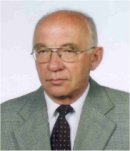|
Plenary
Lecture
Optimization of Control Systems with
Nuclear Radiation Meters

Professor Stanislaw Cierpisz
Department of Electrical Engineering and Process
Control in Mining
Silesian University of Technology
Poland
E-mail:
Stanislaw.Cierpisz@polsl.pl
Abstract: On-line nuclear meters have been in use in
the industry for many years. They have been utilized for
monitoring and control of liquid or solids levels in
tanks and bunkers, density of liquids or monitoring of
chemical composition of various materials processed in
chemical plants. A wide use of radiometric measuring
methods can be especially observed in the coal industry
in the control systems for coal quality (ash content)
stabilization or for separating coals in coal
beneficiation processes.
Analysis and optimal synthesis of such monitoring and
control systems is presented in the paper. Operation of
an industrial nuclear radiation monitor (for example – a
liquid density meter or ash content in coal analyser) is
usually based on the scattering or the absorption of
incident gamma radiation, and the derived parameter
value (density, ash) is the result of a time-averaged
measurement.
The output signal from the detector (scintillation
counter) of gamma radiation is always a stochastic
signal, regardless of the character of the input signal
(i.e. density or ash content) modulating the intensity
of the detected radiation beam. The longer the averaging
time the higher the statistical (static) accuracy of the
monitor. At the same time, if the input signal varies,
the dynamic error of the measurement is higher. This
suggests that for a given shape of the input signal and
a given structure of the monitor circuit, one can find
an optimal averaging time of input pulses, which gives
the minimum dynamic error according to the accepted
criteria. Furthermore, this leads to the application of
a circuit with an adapting time constant. If the input
signal is, for example, a step function and the nuclear
radiation monitor is to reproduce this change, the time
constant should be small at the beginning of the
measurement to speed-up the reaction of the meter, and
then it should become greater to read-out accurately the
new value of measured parameter.
A nuclear radiation monitor used in a closed-loop
control system generates a stochastic signal which
results in stochastic fluctuations of the controlled
parameter which, in consequence, modulates mean
intensity of stochastic pulses from the detector, etc.
In this way, non-stationary stochastic signals are
generated in the control system which makes the system
analysis difficult.
A simplified analytical method of a system analysis has
been discussed in the paper. The method generally is
based on the decomposition of a non-stationary signal to
deterministic , time varying mean value, and a
stationary noise. Parameters of both components depend
on dynamic properties of the monitoring system. Such
approach enables one to determine optimum transfer
function of the closed loop system minimising the
dynamic error of the control due to the accepted
criterion. Comparison of optimisation results obtained
from the simplified analytical approach and more
accurate simulation analysis has been also presented.
The concept of an ash monitor with a time constant (or a
time of measurement) adapting to variations of an input
signal (ash content) has been analysed. The fuzzy logic
has been applied to establish the structure of the
adaptive filter. Such a system allows to speed-up the
reaction of the instrument to rapid variations of ash
content and at the same time to achieve better
statistical accuracy for a longer period of time. This
is particularly important in closed loop control systems
or in splitting of a coal stream to different products.
Simulation analysis of the coal blending control system
applied in the "Sosnica" plant has been presented in the
paper. Application of an on-line ash monitor with an
adaptive time constant has been discussed. The results
of practical experiments have been presented in the
paper.
Brief Biography of the Speaker:
Graduated from the Electrical Engineering Faculty at the
Silesian University of Technology, Gliwice, Poland
(1961). PhD in process control received in 1968.
Fellowships: UN (British Council) (United Kingdom,
1969-70), ACTIM (France, 1974), Fulbright fellowship
(USA, 1975-76), IEE Australia (Guest Speaker, 1985). For
12 years (1997-2009) he was the Head of the Department
of Electrical Engineering and Process Control in Mining
at the Silesian University of Technology, Poland. At
present he is a full professor at the same University.
Published 5 books and over 200 papers on process control
in mining and minerals preparation. Interests:
industrial process control, simulation techniques,
tourism, skiing.
|
